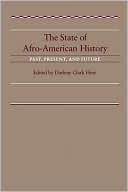

 |

|

The average rating for The State of Afro-American History: Past, Present and Future based on 2 reviews is 5 stars.
Review # 1 was written on 2014-05-18 00:00:00 John Magar John MagarBuilding upon Henry Louis Gates Jr.'s groundbreaking scholarship on African American aesthetics (1989) The Signifying Monkey: A Theory of African-American Literary Criticism (1989), Gladstone Yearwood (2000) posits a "signifying practice" to provide an analytical framework in which individuals can make sense of a film's cultural and theoretical expressions specific to the Black experience onscreen in Black Film as a Signifying Practice. Yearwood blends Gates' theory of signifying with a semiological analysis to formulate his understanding of how a signifying practice might function in Black film. Yearwood argues for a signifying practice to underscore that meaning is not a given property of film and that it is determined and is fact not separated from socio-cultural and socio-political context. I agree with Yearwood's formulation but it feels clunky, at times. The book tries to balance historical analysis and framework of Black cinematic images, theory, literature review, critique, and film analysis. There are too many things happening in the book for the reader to walk away with a coherent understanding of what is, essentially, a new theoretical and methodologically way of viewing filmmaking, specifically contributions made by Black filmmakers. Because of this the richness of a "signifying practice" gets lost and, at times, buried under information. I think this book would have been better served as two separate books, one that focused on film history and film critique and the second focusing on theory and film analysis utilizing said theoretical approach. Overall, Yearwood provides a much needed and fascinating exploration of Black cinema and this book should be mandatory reading for film studies as whole. |
Review # 2 was written on 2012-03-12 00:00:00 J Nelson J NelsonHeard a bit about the Gullah population clustered around the Carolina sea coast and wanted to find out more. I had some misinformed ideas about who the Gullah people were that this book effectively remedied, but this is a pretty dry anthropological text. The most rewarding chapters were those on the Gullah language and social structure and their relation to/mutation from their African forebears, and it's always instructive to be reminded of the horrific physical hardships endured by slaves in the American South. But the graphs: wholly unnecessary in light of the more-than-sufficient textual explications. Pollitzer couldn't have ended his book on a more eloquent, true note: "The Gullah people are not a museum piece, relics of the past, but rather survivors of enslavement, bondage, discrimination, and white privilege, fellow human beings entitled to work out their own destiny." |
CAN'T FIND WHAT YOU'RE LOOKING FOR? CLICK HERE!!!